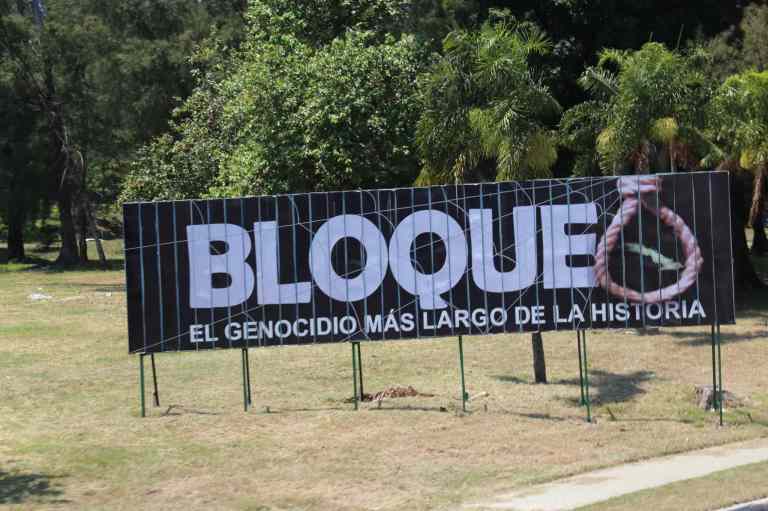
While in Havana, we had the opportunity to visit the US Embassy there. I don’t often visit embassies when abroad, but this was a special case since it’s only been an embassy for just over a year. Before 17 December 2014 when Raúl Castro and Barack Obama simultaneously announced to their respective nations that they would resume diplomatic relations, the building served as the US Interests Section in Havana since the Carter administration. Aside: This sounds astoundingly like “intersection” when someone tells you about it verbally, so there was much confusion among my cohort mates on the official title. /aside


As the title quote points out, US-Cuba relations have been fraught since the 1959 revolution, no matter how many other things have changed in the world. It’s one of the few bipartisan areas in the US that has remained a back burner issue for many US presidents on both sides of the aisle. It’s a little hard to imagine that the question of how to interact with Cuba and the Castros has vexed Presidents Kennedy, Nixon, Ford, Carter, Reagan, Bush, Clinton, Bush, and Obama. I highly recommend LeoGrande and Kornbluh’s excellent book, Back Channel to Cuba, which provides an impressive look into each of these administrations’ interactions with the island.

It is encouraging that relations are opening up, though it will be a much longer process than most in the US seem to think. Before I visited the island, I remember having lots of conversations with people about how we were going to put a McDonald’s on every corner before very long, so everyone should go and see the ‘virgin city’ before it’s sullied by US influence. I think there’s very little chance of an immediate influx of US multinationals, though not for lack of trying on their part. Cuba is cautious about US influence.



There were many things I did not know about US-Cuba relations before living in Havana. I did not know that the embargo or bloqueo/blockade was increased after the Cold War ended with the Helms-Burton Act. This act also takes the embargo out of the president’s hands and requires an act of Congress to end it. Of course, the embargo is not just one bill – it’s many, including one passed during World War I to prevent fraternisation with enemy forces in wartime. We have never been at war with Cuba, yet this document and others define our interactions with them today.

I also did not know the extent to which relations deteriorated between our countries in the early 2000s. In the wake of 9/11, Cuba was added to the terror watch list, though no evidence has ever been presented that Cuba supports terrorists or had any part in attacks on the US during this period. The heads of the U.S. Interests Section in Havana and Fidel Castro, who was president of Cuba at that time, went back and forth in an increasingly escalating outdoor theatre at the U.S. Interests Section.
As outlined in Back Channel to Cuba, in 2004, the US Interests Section included among its Christmas decorations a large neon ’75’ to commemorate the dissidents imprisoned in Havana. After repeated requests from the Cuban government to the US officials to remove the ’75’ sign, the Cubans put up a billboard across the Malecón with a picture of US soldiers in Abu Ghraib prison, abusing prisoners. In 2005, the front of the US Interests Section was supplemented with a 3-foot high scrolling news reel across the fifth floor, displaying quotes from Martin Luther King, Jr. and the Universal Declaration of Human Rights. In response, the Cuban government put up 138 black flags across the street from the Interests Section to obscure the news reel and commemorate the 3,000 Cubans killed by US covert activities since 1959. You can still see the flag poles today, though the flags have been removed.



It’s hard to get a sense for what Cuba was like even 5 years ago as many of the laws regarding private ownership have changed. I imagine it will be even more different in the coming years. But one thing is certain: the US and Cuba will continue to have a complicated relationship.
Title quote: President Barack Obama on his visit to Cuba, 22 March 2016
